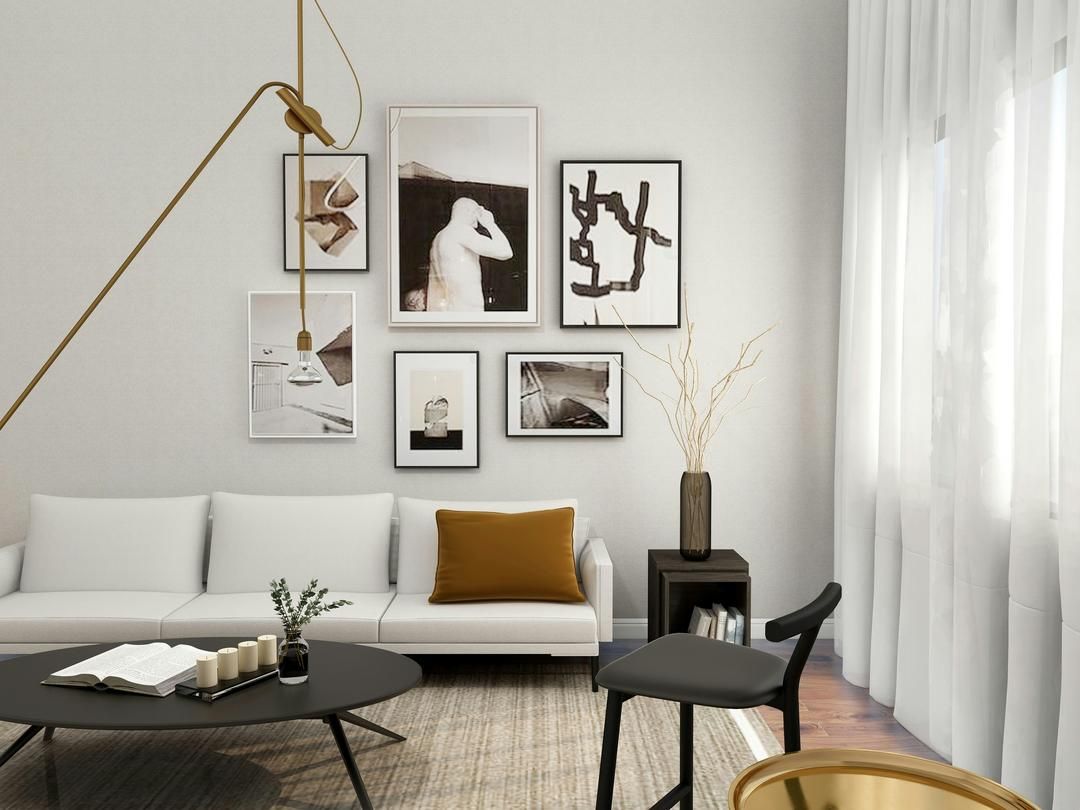After moving into a new place around Sanford, a lot of people feel pressure to get every room finished right away. Boxes are unpacked, furniture is in, and suddenly it feels like you can’t relax until the last lamp or throw pillow is in place. That pressure often comes from quick delivery options, fast-changing design trends, and the natural urge to feel settled. But more homeowners here are finding that slowing down actually leads to homes that feel calmer and more personal. When you let a room take shape over time, you make choices that fit your real routines instead of rushing to make everything look “done.”
What is slow decorating?
Slow decorating is about creating a home that works for you by paying attention instead of hurrying. Instead of filling every corner the first week, you live in the space and see how it behaves. Maybe you notice how the morning light hits the kitchen windows or how the back porch becomes your favorite spot in the evenings. You start to see which corners naturally turn into reading spots and which areas become drop zones for bags and shoes. That time spent simply living in your home often reveals what you actually need—things you’d never catch on a single shopping trip. This approach works just as well in a small downtown apartment as it does in a larger home near Carolina Trace or along Deep River Road.
Why gradual decisions often lead to better long-term results
Fast decorating is what we’re used to seeing online—before-and-after photos that make it look like a full transformation happens in a weekend. It’s satisfying to look at, but it can lead to choices that don’t hold up. Maybe the sofa ends up too big for the room, or you realize later that you skipped practical storage. People who take a slower approach tend to avoid those frustrations. They measure, compare, and think through their options. They’re less likely to make impulse buys and more likely to feel confident about big decisions like paint color or rug size. Over time, the space starts to reflect how they actually live, not just how they imagined it would look when they moved in.
What seasonal living reveals about your space
Homes in this area can feel completely different from one season to the next. A living room that feels bright and airy in July might feel chilly in January, especially in older homes with original windows. A sunny kitchen nook might become your favorite coffee spot once the angle of the sun shifts in fall. Slow decorating gives you time to notice those changes before committing to permanent layouts or purchases. You might realize you need heavier curtains in one room, a warmer rug in another, or a new seating arrangement once the days get shorter. As the months pass, those observations help you decide what actually works year-round instead of just what looks good in a photo.
How slow decorating helps clarify personal style
When you move into a new home, it’s easy to question your taste. Maybe your old furniture doesn’t fit, or the wall color doesn’t work with the flooring. Slow decorating gives you permission to figure it out gradually. You can experiment without locking into a theme. Maybe you borrow a coffee table from a friend while you search for one that fits both your space and your budget. Simple shelving can help you test how much storage you really need before investing in built-ins. As you live with these temporary setups, patterns start to emerge. You notice which textures, shapes, and colors you keep coming back to. Over time, your home starts to feel cohesive because it’s built around your real preferences, not a single inspiration photo.
Using what you already have to evolve your home
Slow decorating doesn’t mean constant shopping. In fact, it often starts with rearranging what you already own. Moving a sofa closer to a window can completely change how inviting a room feels. Swapping a chair from the bedroom into the living room might make both spaces work better. Shifting a bookshelf to a different wall can change the balance of an entire room. Rotating artwork, pillows, or blankets from one space to another keeps things feeling fresh without spending a dime. These small changes help you see which pieces actually support your daily life and which ones don’t. Over time, your home becomes more functional and more personal.
The influence of sustainable habits on slower design
Sustainability is another reason more people are slowing down their decorating process. Furnishing a home with secondhand or vintage pieces reduces demand for new production and keeps good furniture out of landfills. According to the United States Environmental Protection Agency, furniture contributes to a meaningful amount of landfill waste each year, and many of those pieces still have usable life left. Choosing previously owned, durable items fits naturally with the slow decorating mindset. A solid wood dresser from a local resale shop in town can be refinished or repurposed over time. A vintage dining table might outlast several design trends. Because you’re not trying to buy everything at once, this approach also works for a range of budgets and timelines.
Why observation is the first step
For most people, slow decorating starts with observation. Instead of rushing to fill blank walls, you take time to notice how your home functions. You see where clutter tends to pile up and which areas you rarely use. You figure out which rooms carry most of the daily load. Maybe the kitchen island becomes homework central or the living room doubles as a workspace. When you do start making changes, you focus on what matters most. A bedroom might need better window coverings before new art. A living room might benefit more from comfortable seating than from a gallery wall. That early observation helps you prioritize what actually improves your day-to-day life.
How lighting shapes the feel of a room
Lighting is one of those details that rewards patience. Natural and artificial light change the mood of a room throughout the day. Colors can look warm in the morning and cooler by evening. A corner that feels too dim in winter might be perfectly bright in spring. By paying attention to how light moves through your home, you can make smarter choices about lamps, bulbs, and window treatments. Temporary lighting like clip-on fixtures or string lights can help you test what works before committing to built-in solutions. Over time, this attention to lighting makes your rooms more comfortable and practical.
How a gradual approach supports emotional comfort at home
Slow decorating isn’t just about function. It’s also about how your home feels emotionally. When a space grows alongside your life, it ends up filled with things that actually mean something. A side table might hold books you’ve read. A shelf might display items that remind you of certain seasons or milestones. Artwork and photos find their places gradually instead of all at once. The result is a home that feels lived in and familiar. Its story unfolds through your choices over time, not through a single weekend of decorating.
Why slow decorating fits the way people live today
Slow decorating works well for how people live now. Jobs change, schedules shift, and families grow or reshape. A room that’s a home office one year might become a guest room or playroom the next. When you don’t rush to define every space, it’s easier to adjust as your needs change. This flexible mindset fits right in with the growing interest in sustainable living, secondhand shopping, and more personal interiors. Instead of trying to finish your home on a deadline, you give yourself space to make thoughtful updates. Over time, that slower pace leads to homes that feel grounded, personal, and easy to enjoy day to day.
If you’re thinking about listing your home and want to know what buyers around Sanford respond to, reach out. We’re happy to share local insights before you make any big decisions about updates or decor.





